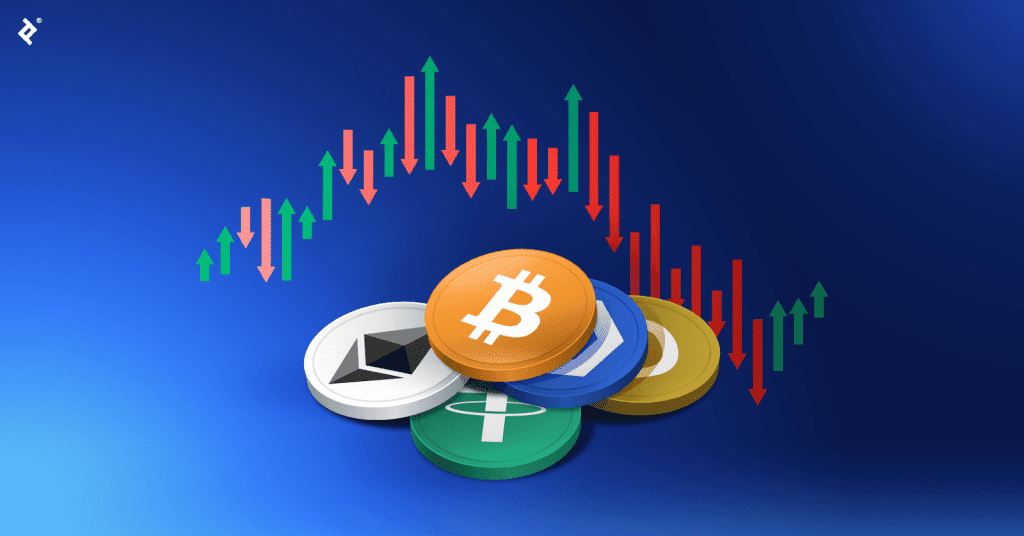The global cryptocurrency market has once again entered a phase of heightened volatility, this time triggered by renewed trade tensions between the world’s two largest economies— the United States and China. In early April 2025, both nations imposed a new round of tariffs on each other’s goods, reviving fears of an extended trade war and introducing fresh uncertainty across financial markets. As expected, digital assets such as Bitcoin and Ethereum have felt the impact, registering significant price swings in response.
This recent geopolitical standoff adds another layer of complexity for crypto investors already grappling with fluctuating monetary policy, regulatory scrutiny, and macroeconomic instability. With digital assets often reacting sharply to market sentiment, the ongoing trade developments between Washington and Beijing could continue to act as a destabilizing force in the short term.
Renewed Tariff Measures Spark Widespread Market Disruption
The turbulence began on April 3, 2025, when the U.S. government announced a sweeping set of new tariffs on a broad array of Chinese imports. Officials in Washington cited ongoing concerns over unfair trade practices, intellectual property violations, and the imbalance in bilateral trade. In response, China swiftly retaliated by imposing tariffs of its own on key American exports, escalating tensions to levels not seen since the height of the trade war under the Trump administration in 2018–2019.
The reaction in financial markets was immediate. Equities tumbled, bond yields dipped, and global investors rushed to rebalance their portfolios. Cryptocurrencies, known for their sensitivity to economic shocks and investor sentiment, also responded with a sharp sell-off.
Bitcoin, which had been hovering close to the $88,000 mark just days earlier, plunged to around $82,000 in the wake of the tariff news. By April 4, it found some stability near $83,000, but the overall loss represented roughly a 6% drop from its weekly high. Other major altcoins like Ethereum, Solana, and Avalanche fell between 5% and 7%, with some hitting their lowest levels in several months.
Investor Sentiment Wavers in the Face of Geopolitical Risk
Cryptocurrencies are often positioned as hedges against systemic instability, inflation, and fiat currency devaluation. However, their behavior during global crises has not always been predictable. In this case, the market’s reaction suggests that investors are pulling back from riskier assets, including digital currencies, in favor of more traditionally defensive instruments like gold and U.S. Treasury bonds.
The U.S. stock market mirrored this sentiment. Futures tied to the S&P 500 fell nearly 3% in overnight trading following the announcement of tariffs. This compounded losses from earlier in the week, during which the index had already declined by 5%. Analysts interpreted this across-the-board slump—spanning equities, crypto, and commodities—as a signal of broader investor unease.
Interestingly, XRP stood out as an anomaly during the decline, posting modest gains and trading above the $2.00 level. Analysts attributed this move to positive momentum in the ongoing Ripple vs. SEC legal saga, which has bolstered confidence among XRP holders despite the broader market downturn.
Institutional Moves Offer a Glimmer of Confidence
Despite the drop in retail enthusiasm, institutional investors appear to remain cautiously optimistic. On April 2, Bitcoin spot exchange-traded funds (ETFs)—particularly those managed by BlackRock and Fidelity—recorded more than $218 million in net inflows. This marked a reversal from previous outflows seen earlier in March and suggests that some institutional players are viewing the price dip as a buying opportunity rather than a signal to exit.
Kraken’s Head of Strategy, Thomas Perfumo, cautioned against misinterpreting volatility as weakness. According to him, the fluctuation could reflect rising demand for a limited-supply asset like Bitcoin, especially during times of macroeconomic instability. “This type of volatility is a natural response to uncertainty—it doesn’t mean the asset is losing relevance. On the contrary, it’s a sign of its growing adoption and importance in modern finance,” Perfumo noted in a press briefing.
Echoes from the Past: How Similar Episodes Have Shaped the Market
The crypto market’s reaction to this latest trade flare-up isn’t without precedent. During the 2018–2019 U.S.-China trade conflict, Bitcoin experienced a series of dramatic spikes and sell-offs, often seen as a reflection of investor uncertainty about the global economic outlook. In some instances, Bitcoin acted as a safe haven, rising in value as traditional markets plunged. In other moments, it behaved more like a tech stock—falling in tandem with broader risk assets.
A similar pattern emerged in 2023 and 2024. Bitcoin prices swung widely based on policy updates from central banks and fiscal authorities. Decisions by the U.S. Federal Reserve and macroeconomic conditions in Europe and Asia played a significant role in shaping investor behavior. Entering 2025, it was already clear that the cryptocurrency market would face more of the same: geopolitical unpredictability, financial regulation, and uneven institutional involvement.
Other Headwinds: Interest Rates and Regulatory Moves
As if geopolitical instability weren’t enough, crypto investors are also keeping a close eye on interest rate policies. Although U.S. inflation has cooled slightly since the start of the year, the Federal Reserve remains cautious. With interest rates still elevated, borrowing costs are high, and liquidity is tight—conditions that typically suppress high-risk investments like cryptocurrencies.
Market participants are anxiously awaiting the outcome of the next Federal Open Market Committee (FOMC) meeting, hoping for hints of potential rate cuts in the second half of the year. However, until monetary policy becomes more accommodative, many believe the crypto market will remain under pressure.
Meanwhile, U.S. regulators are ramping up their oversight of digital assets. The House Financial Services Committee recently advanced the Stablecoin Transparency and Accountability Act (STABLE Act), which would place tighter controls on fiat-backed stablecoins. The bill includes provisions for full reserve backing, public audits, and mandatory disclosures—potentially increasing compliance burdens for issuers and exchanges.
Safe Havens and the Search for Stability
Globally, investors continue to debate whether Bitcoin can serve as a true “digital gold.” Although the asset has shown resilience over the years, skeptics argue that its extreme volatility disqualifies it as a reliable store of value in times of crisis. Traditional safe havens such as gold, the Japanese yen, and U.S. Treasury bonds have once again attracted more inflows during this recent episode of instability, reinforcing the view that crypto still has some distance to cover before it can be fully trusted as a crisis hedge.
Nonetheless, long-term crypto proponents remain undeterred. They point to growing institutional adoption, ongoing technological upgrades—including layer-2 networks like the Lightning Network—and increased utility in payments and decentralized finance (DeFi) as signs of a maturing ecosystem.
Conclusion: Navigating Uncertainty in a Digital Age
The recent decline in cryptocurrency prices amid the U.S.-China tariff escalation is yet another reminder of the digital asset market’s sensitivity to global developments. As governments, central banks, and international regulators continue to influence market conditions, investors must stay nimble and well-informed.
While volatility may dominate the short-term landscape, many experts still believe in the long-term promise of blockchain technology and decentralized finance. The path forward may be uncertain, but for those with conviction and strategic foresight, the crypto market still offers substantial potential—albeit with risks that can no longer be ignored.
In a world increasingly shaped by economic rivalry and technological change, cryptocurrencies are no longer on the fringe. They are now a central part of the global financial conversation.























